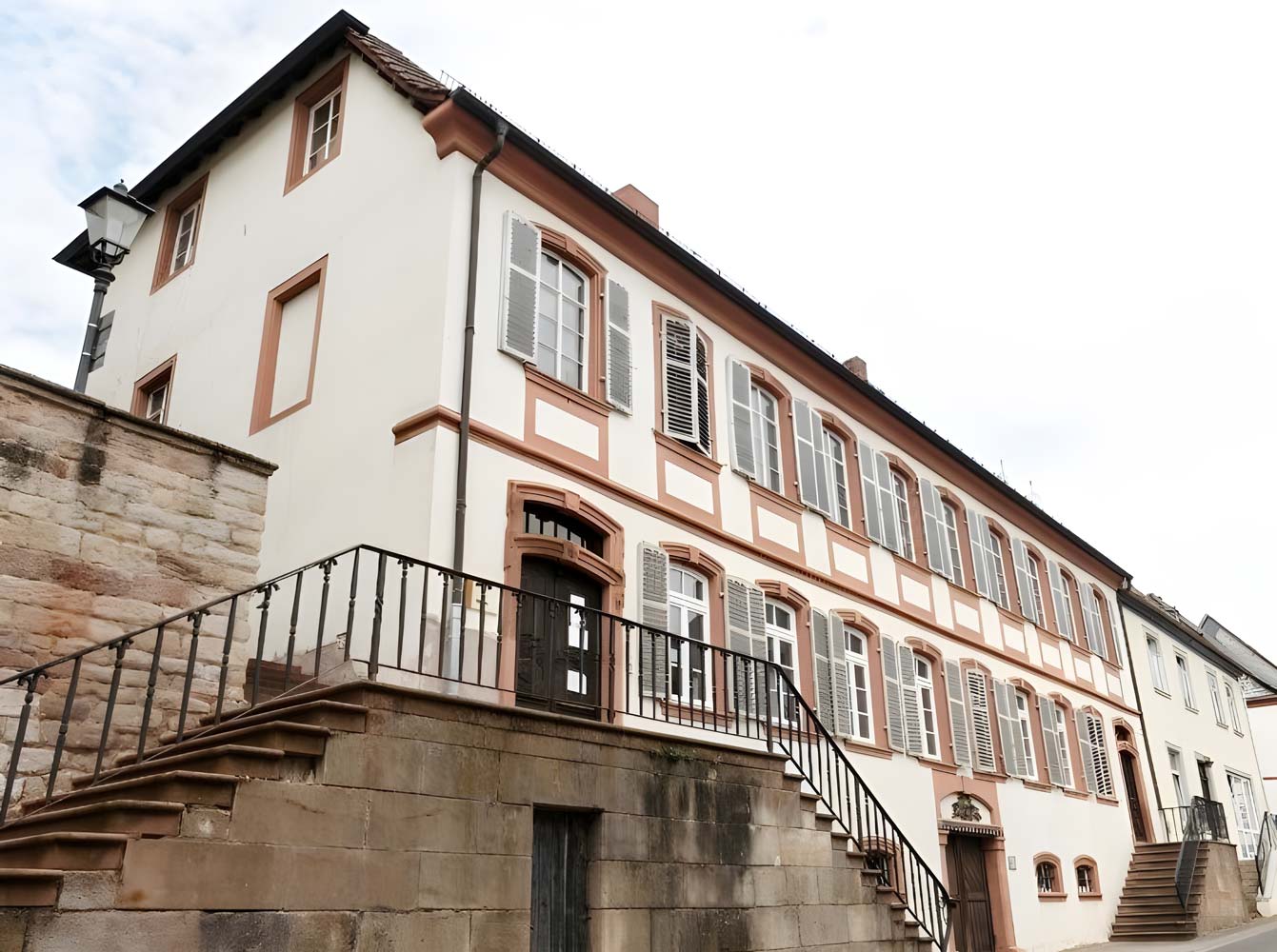Untere Amtsstraße
Monument zone
Amtsstraße – known as Printzen-Gaß in the 18th century – was laid out in the middle of the 18th century as the main axis of the Upper Suburb, presumably by Julius Ludwig Rothweil. The houses, many of which are characterized by archways and access staircases, are identified by dates around 1750.
Due to the conceptually stringent development, the entire street is designated as a monument zone. The upper floors of the two-storey buildings are mostly built in plastered half-timbered construction and are staggered in height as a result of the relief-related street gradient. This enhances their visual impact.
In terms of function, the street was mixed during the princely era – typical of a “small residence”: official administration (Amtsstr. 27/29), church and schools (Amsstr. 1,7) and commerce (gateway opposite Amsstr. 1 with baker’s sign). In addition, upscale living was (and is again today) possible.
Historically, the Amtsstraße not only conveys the image of a “small residence” in terms of urban planning and architecture, but also in terms of urban function and social aspects.
Lothar and Edeltraud Sießl
The house at Amtsstraße 1 is described in the inventory of art monuments as a “sophisticated building” from the Kirchheimboland residence period.
In the more recent history of the town, it is associated with Dr. Lothar and Dr. Edeltraud Sießl. Both had their medical practice here. Lothar Sießl was also mayor of the town from 1974-99 and earned great political merit, particularly through the redevelopment of the town. Edeltraud Sießl “staged” the 1848/49 revolution in her own artistic style at the Grey Tower [Standort 08].
Today’s cityscape has thus been given a lasting impetus by Dr. Sießl.

